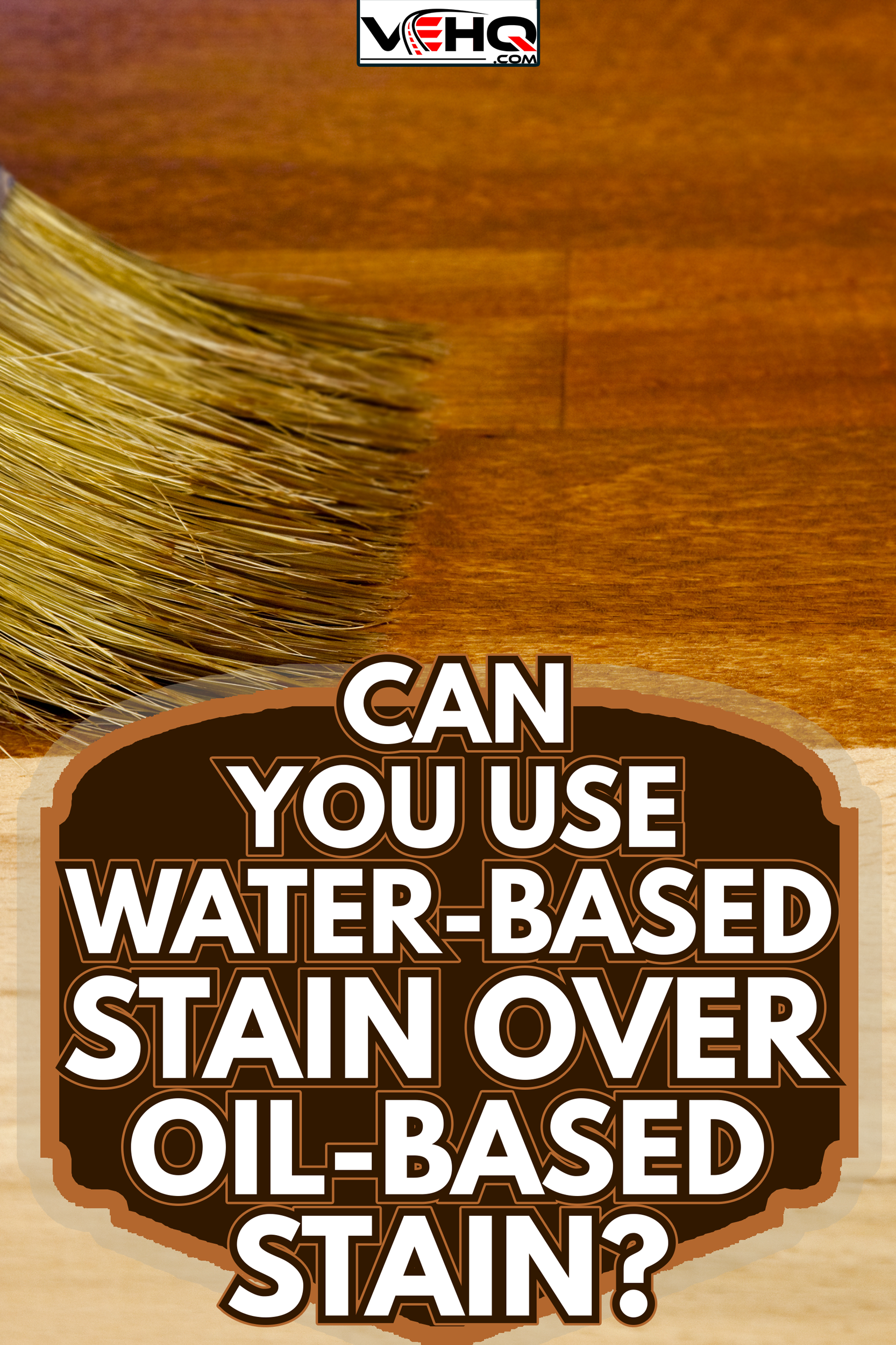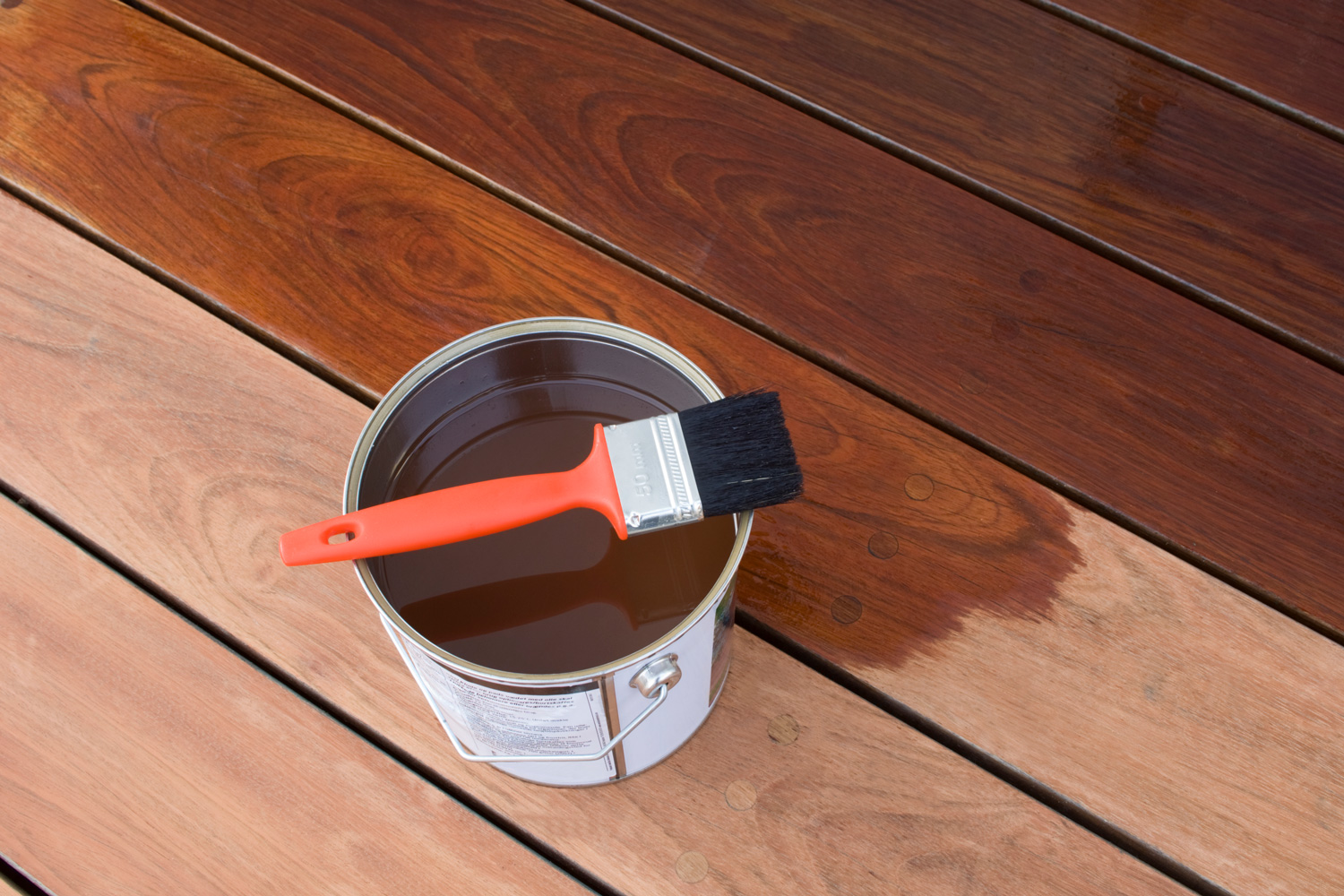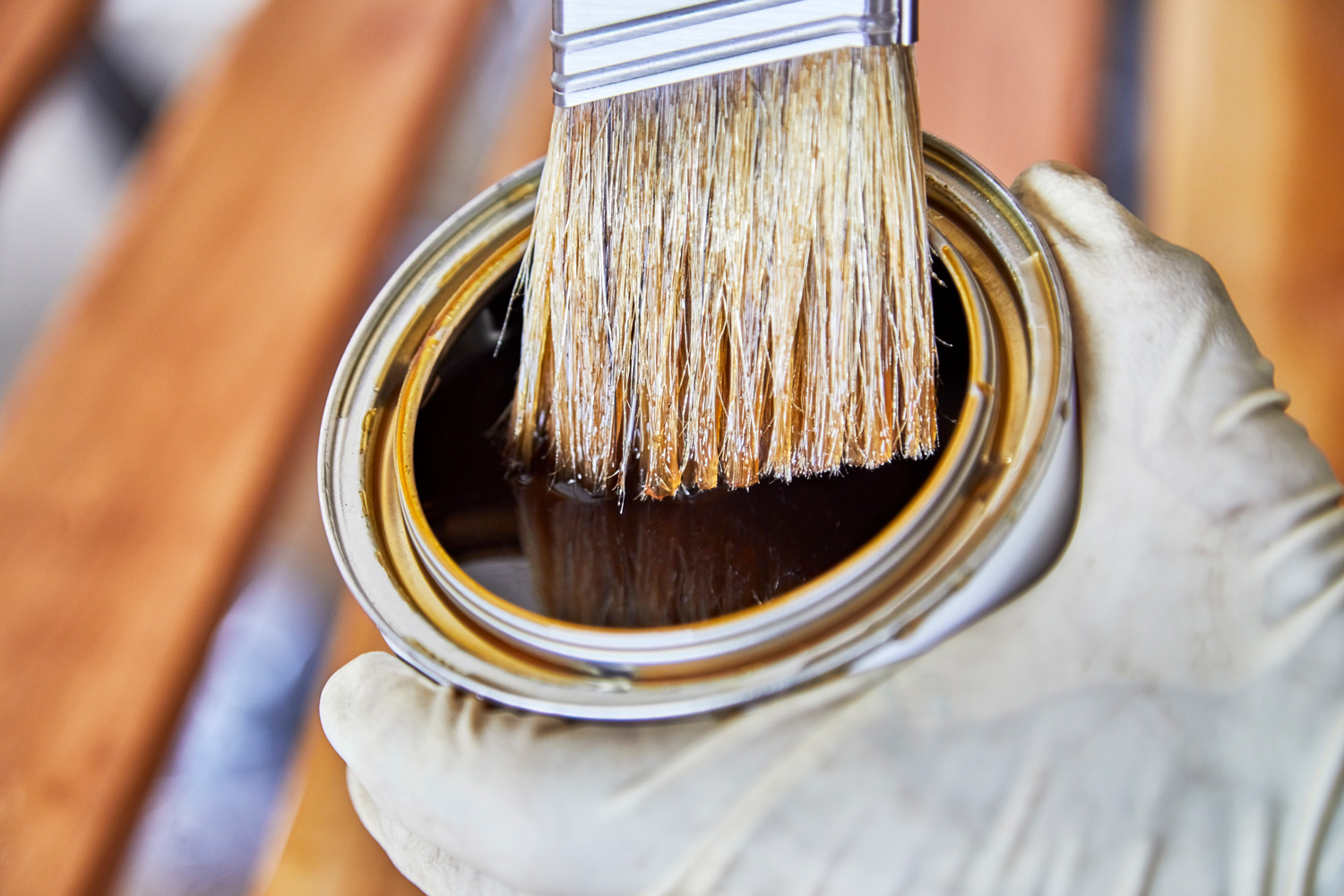Applying water-based stain over oil-based stain won’t turn out well if you don’t follow the instructions correctly. Some people make mistakes when applying water-based over oil-based. You probably think this wouldn't work because water and oil don't mix, and you're nearly right. We've looked to painting experts to get the best answer on using water-based stain over oil-based stain.
Yes, you can use water and oil-based products over each other. However, you must follow the instructions correctly in that situation; you don't want mistakes. Most experts have said that the underlying surface should be completely dry. This process can give you the best outcome.
Just knowing to follow the instructions only leads to more questions about applying water-based stain over oil-based stain. So, sit tight and keep reading to learn how to properly stain over either surface with exceptional results.

Correctly Applying Water-based And Oil-based Over Each Other
If you’ll use water-based as a topcoat, you should allow the oil stain to dry for at least 72 hours before applying water-based products.
And if you will do it vice versa, you should allow the water stain to dry for at least 24 hours before applying an oil-based. As you use this method, we guarantee you'll see quality results.
What Are Common Staining Mistakes To Avoid?

We sometimes add affiliate links and content that was curated and created by our team with the help of advanced ai tools to help showcase the best design styles.
Working in Direct Sunlight or Extreme Conditions
You should avoid working on direct sunlight or hot surfaces. Extreme conditions like sun exposure can be the most damaging element on wood. It can darken the wood and will cause permanent discoloration. Too much exposure to ultraviolet light (UV) will cause discoloration or might as well darken the wood.
Staining wood without cleaning
Don’t apply stain to dirty wood; you thoroughly clean and allow the intended surface to dry completely first. Any remaining dirt would be trapped inside the stain layer and result in a blotchy appearance.
Too Many Coats of Stain
Avoid applying too many coats for stain. If you applied too much of it, it won’t dry properly and will become rough. This can also happen if the wood hasn't been stripped and sanded down to bare wood because the stain will sit on top of the surface rather than sink into it.
How To Avoid Common Mistakes When Staining?

- Work only on an ideal temperature which is 70°F (21°C) and 50% humidity. Pick a good day to do the work when the rain is not expected. Additionally, avoid working in tight quarters or no ventilation environment, especially when using oil-based stain, because it can risk your health. A well-ventilated area can provide better working conditions.
- You must have a smooth surface before staining. Make sure not to leave any blemishes, scratches, dust, grease, or dirt. The stain will highlight any scratches if you don’t clean it very well. Make sure you sand down to clean the wood before applying a stain on it.
- If you applied too much stain or didn’t wipe it off immediately. You can fix it by applying another coat of stain. Let the stain on the furniture for less than a minute. The solvent on stain will allow it to dry. You can remove the excess on the second coat by wiping it off with a rug.
Additionally, you can apply mineral spirits to the stain to remove the excess stain that’s not drying to fix the stickiness on the wood stain. It’ll dissolve the wood stain. It’ll be easier for you to wipe off the excess stain.
Check out this video for some great application tips:
Advantages And Disadvantages Of Using Oil And Water Based Products
You’re maybe wondering if there are still pros and cons when you use oil and water-based products. Of course, there are!
Water-based Pros/Cons
- The water stain dries quickly after application but will take longer to dry in lower temperatures and high humidity.
- It is no harmful odors and fumes, so if you breathe water-based stain, it won’t give you any harmful effects. It is non-toxic and the most eco-friendly. That’s why most people use water-based as their option. It’ll reduce the risk of exposure during application.
- Water-based stain is easier to clean up; it only requires soap and water. One more why water-based is on top of the option is it keeps the color for a longer period of time it resists decay or both yellowing and cracking.
- The downside of the water-based is that it’s less durable. It’s easy to remove with water and soap because it produces fewer VOCs and dries quickly. You should check the material safety data sheet (MSDS) or ask the manufacturer before using stains that have glycol ether solvents which is very harmful to your health.
Overall water-based paints are safe to use but also don’t forget the disadvantages of it.
Oil-based Pros/Cons
- Oil-based stains need more time to dry than water-based stains. However, it allows the job to be more even finish, and won’t create lap marks. Because of their drying time, oil-based is most discernible from water-based stain.
- When the oil-based stain is applied expect that it can achieve sheen on its higher level due to the makeup of the paint. Even so, the sheen will become duller over a period of time.
- Oil stain has its greatest advantage, which is its extreme durability. It will penetrate the wood more easily than water-based stain. It is because the oil molecules is actually smaller than water molecules.
- Oil stains are more likely to be hazardous which can lead to health complications. It can contain higher VOC which is really bad for the environment. You can use mask for less exposure and lowering the risk of breathing harmful chemicals.
Applying Stains In A Cold Weather
It’s possible to stain woods in cold weather but expect that the drying time will double. It will stay wet until the ideal temperature or humidity decreases. But as much as possible, do not stain when the temperature drops below 32 degrees Fahrenheight as it might fail to penetrate.
Is Water-based Stain Better Than Oil-based Stain?

When choosing a stain to use on wood, always identify the surface. Oil and water-based stains provide different levels either when it comes to protection or coverage. There are certain situations when the other stain is better to use. It depends on exposure to weather and the wood quality.
These two main stains have their own benefits and strengths; they have their own purposes. To choose what is better between them, you should consider the factors so you can choose the best-suited stain to use.
When having exposure to weather, the best-suited stain to use is oil-based. Because it’s more durable than the other stain. It’s easy to use because of linseed oil-based binder. If you want to achieve a more even finish, oil-based is the best stain to choose. It penetrates the wood better.
Note, however, that not all oil-based products are penetrating. It’s better to choose products that can penetrate the wood. Additionally, applying oil stains will lessen the long-term maintenance, which prevents costly emergency repairs. Oil-based products are also better to use for large and outdoor projects.
Water-based stains are perfect for small projects as it doesn't have a strong odor. It is usually best under water-based finishes. Water-based are quicker to dry compared to oil-based. Although, it is more expensive than oil-based, their dry-time sets for a better stain than oil-based.
How Long Does Water-based Stain Last?
Water-based stains will last longer if they are applied perfectly. UV resistance and better ability can retain its color. When it comes to shelf life, typically, it does long for three years. So if you have leftovers, store it properly, and it will remain usable for about a year.
Do You Have To Seal Water-based Stain?

Yes, sealing can last longer and will not degrade that fast. Also, it can protect it from damage and discoloration from human touch, foods, and scratches. Somehow, topcoat sealer isn’t really required, but its finish will keep it from fading.
In Closing
Water-based stain and oil-based stain have their own purposes and benefits. Water-based and oil-based are good together, however, you should choose what the perfect stain for your wood is. As we will end the discussion, we’re glad that you need to know more about staining your woods and which stain is much better.
If you want to delve into this topic even further, check out our related posts:
